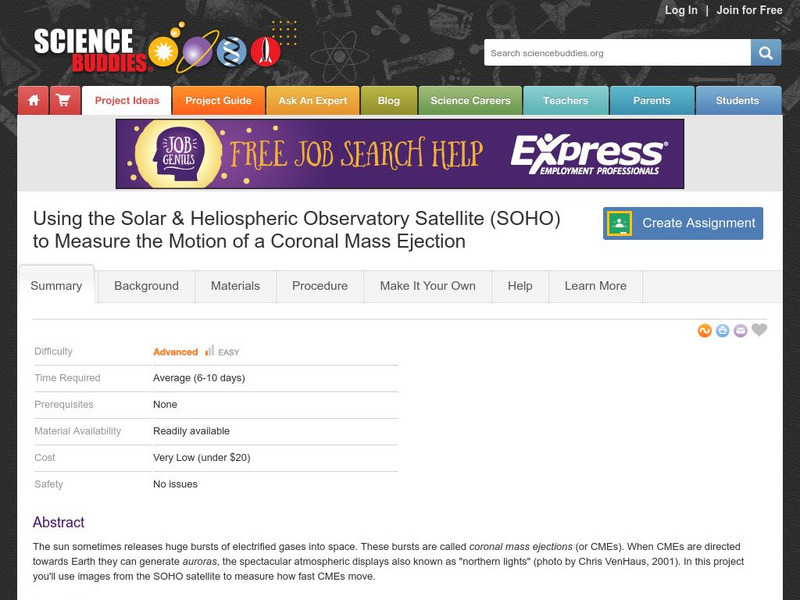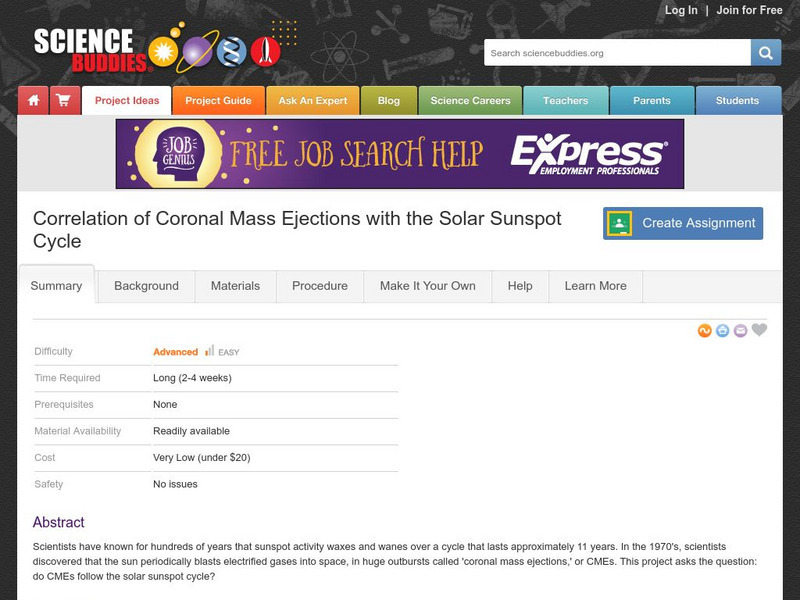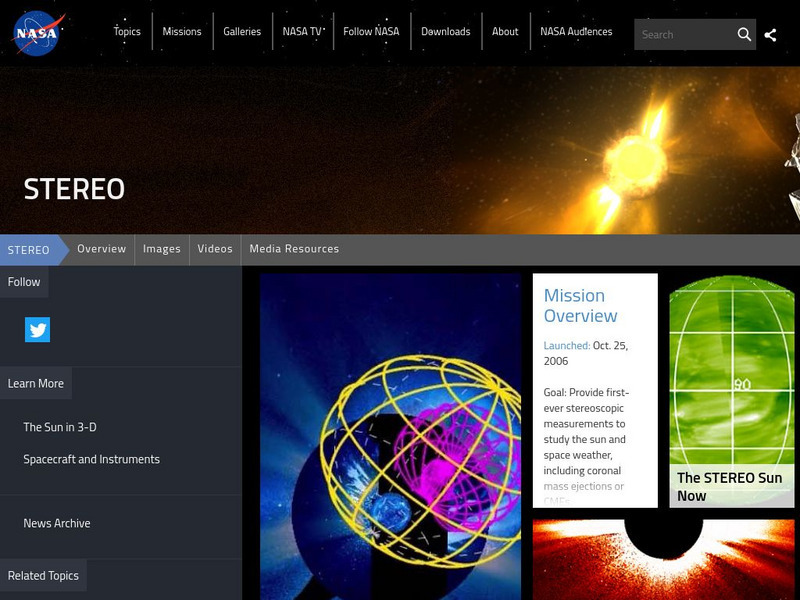Curated OER
Flip Books!
These aren't exactly worksheets, but rather a selection of pdf files of different atmospheric or solar events. Print your chosen pdf file for each aspiring astronomer in your class, have them cut out the individual mini pages, arrange...
NASA
Auroras
In this auroras worksheet, students define 11 terms related to space phenomena such as auroras, coronal mass ejections and auroral ovals. Students use a given website to help them define the terms and they write a 500 word essay about...
Curated OER
Coronal Mass Ejection
In this coronal mass ejection worksheet, students read about the coronal mass ejections detected by the IMAGE satellite and the Hubble Space Telescope resulting in auroras. Students solve 6 problems and determine the speed of the coronal...
Curated OER
Seeing Solar Storms in STEREO-I
In this geometric calculations of solar storms learning exercise, students use a diagram indicating the location of 2 STEREO satellites, the earth and the sun to calculate the distance between a Coronal Mass Ejection and the Earth. They...
Exploratorium
Exploratorium: Space Weather Research Explorer
Explore weather phenomena that occur in space. Topics covered include coronal holes, coronal mass ejections, solar flares, solar wind, the magnetosphere, auroras, and how space weather affects us on Earth.
Science Buddies
Science Buddies: Observatory Satellite Measures Motion of Coronal Mass Ejection
The sun sometimes releases huge bursts of electrified gases into space. These bursts are called coronal mass ejections (or CMEs). When CMEs are directed towards Earth they can generate auroras, the spectacular atmospheric displays also...
Science Buddies
Science Buddies: Correlation of Coronal Mass Ejections With Solar Sunspot Cycle
Scientists have known for hundreds of years that sunspot activity waxes and wanes over a cycle that lasts approximately 11 years. In the 1970's, scientists discovered that the sun periodically blasts electrified gases into space, in huge...
NASA
Nasa: The Sun
An introduction to the Sun including its size and distance from the Earth, sunspots, flares and coronal mass ejections.
NASA
The Earth Sun System
This resource provides some interesting video footage of the Sun. Also included is information about the effects of solar radiation on the Earth's magnetosphere and weather.
TeachEngineering
Teach Engineering: Blazing Gas
Students are introduced to our Sun as they explore its composition, what is happening inside it, its relationship to our planet (our energy source), and the ways engineers help us learn about it.
NASA
Nasa: The Solar Terrestrial Relations Observatory
The Solar Terrestrial Relations Observatory works to help scientists predict and better understand solar storms caused by coronal mass ejections. These powerful storms can disrupt phone signals, GPS, and services that rely on satelites....
Other
Space Weather Center: Our Protective Shield
The Earth's magnetosphere helps shield us from cosmic and solar radiation. This segment offers a great explanation of this abstract concept along with numerous images and diagrams. An interactive game is provided as well.
University Corporation for Atmospheric Research
Ucar: Coronal Mass Ejection (Cme)
A Coronal Mass Ejection (CME) is a powerful, explosive "storm" from the Sun. CMEs hurl millions of tons of particle radiation outward into space.
NASA
Nasa Space Place: What Is an Aurora?
Learn about auroras and their causes, and see some auroras caught on camera.










